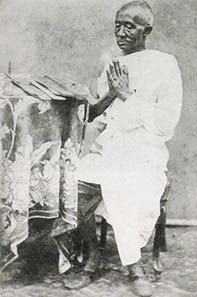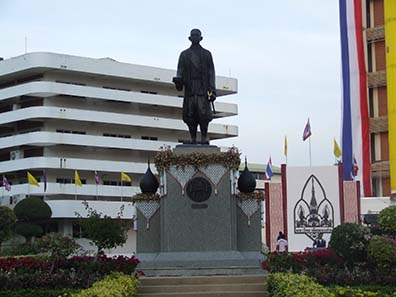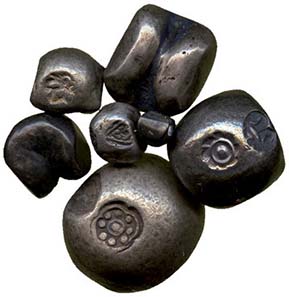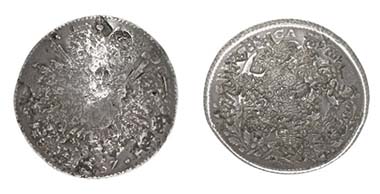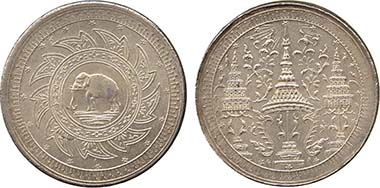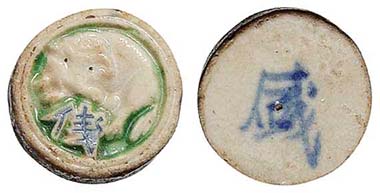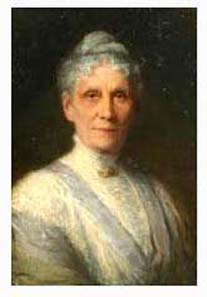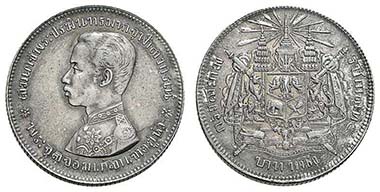Once upon a time, there was a son of a powerful king. He didn’t want to rule. He didn’t like giving orders to his subordinates. He would rather serve god in the seclusion of a monastery. There is nothing like that? Only fairytales begin that way? Oh, but that isn’t true for what is reported here is nothing but the truth.
Photography of Mongkut as monk. Source: Wikipedia.
In 1851, Prince Mongkut abdicated the throne of Siam. He was the eldest son of King Phutthalaetia who is better known was Rama II. Mongkut left power to his younger brother Nangklao who assumed office as Rama III and offered Mongkut the opportunity to let his greatest wish come true: to dedicate himself to the sciences in the seclusion of a monastery.
Mongkut learned English and Latin to read not only his country’s classical writers but the most recent scientific studies from the West as well. He dealt with the latest European discoveries in the technical field, the natural sciences, geography and astronomy; and he read the thoughts of Western scholars about classical questions in history, economics and social studies.
Photography of Mongkut after being crowned as Rama IV. Source: Wikipedia.
In 1851, King Rama III died and Mongkut returned to the court after 27 years of monastical life. He followed his younger brother on the throne and, as king, assumed the name Rama IV. In the few years left to him, Mongkut put an extraordinary program of modernization into practice. He turned the developing country Siam with his medieval institutions into the then most modern state of the Asian continent.
As initiator of a modern Western culture in Thailand the statue of Rama IV still stands in front of the University of Bangkok. Source: Wikipedia / Xiengyod.
Mongkut had had enough time to catch up on what was going on outside Siam. Thanks to his comprehensive studying he realized that the only chance for his country to survive as an independent state was to be gently guided by him into modern times without committing too much to one or the other colonial power or to make itself enemies. England as well as France peered hard at the prosperous provinces of the king. The English had expanded their influence on Burma, and in the East of Siam there were the French in Indochina. Hence, it was all about giving the big powers no reason to interfere in royal politics. Mongkut had to organize the peaceful trade in such a way that England and France would only lose something by a war. That meant the promotion of the trade and, at the same time, the education of the own citizens to such an extent that they would be on par with the business partners in Europe and wouldn’t be cheated. Hence, Mongkut created in Thailand an educational system following Western models. He was proven successful quite soon. Only a few years after the beginning of his reign, the trade began to flourish so much that the traditional Thai monetary system became insufficient to meet the financial transactions of the country.
Siam. Silver Pot Duang. From auction Baldwin, Hong Kong Coin Auction 50 (2011), 1039.
Until then, the currency had been bullet money or “Pot Duang” as it was called in Siam. These small pieces of metal were produced from a meticulously weighed bar of silver which was folded and hammered until it got a fairly round shape. Pot Duang were made in different denominations with the most popular being the Baht – this denomination plays a decisive role in the Thai monetary system until the present day.
Unfortunately, the bullet money was barely suitable for the flourishing trade: it was simply too expensive to produce. The royal mint wasn’t able to produce enough Pot Duang to meet the increasing demands of the trade for cash. Mongkut, however, had read that there existed machines in the West able to manufacture flat coins at a great speed. He intended to acquire one of these machines in England.
Contact with English producers of minting machines were already established in 1856; when Mongkut’s envoys in England received their first official invitation to visit the Queen, she on her part had already got word about the plans of her “colleague”. An exchange of gifts was part of the welcoming ceremony and the English Queen was delighted to present King Mongkut with something he would surely enjoy: she had a small minting machine delivered that enabled the monarch to mint his first modern coins. Of course, the lovely machine was too small to produce coins on a massive scale. The ambassadors, therefore, ordered a suitable mint press at the company Taylor & Co. in Birmingham. But, as it is sometimes with orders, the minting press didn’t arrive. Today, that would be called delivery problems.
In February 1858, the bullet money ran short to the effect that King Mongkut made the introduction of new coins his first priority. He charged the English ambassador in Bangkok with the purchase of a new minting machine. The ambassador ordered one at the price of 2,000 Pounds and discovered shortly thereafter that there was already an order for a minting machine processed. Hence, the second order was cancelled and finally – who would have believed – the machine was delivered, at the end of 1858 at the earliest. Three workmen accompanied the delivery in order to help with its set-up. All three died because of accidents or tropical illnesses. King Mongkut really wasn’t very lucky with his coin production!
As late as 1860 a local technician managed to bring the minting machine into service. Mongkut at last was able to modernize his outdated monetary system.
Mexiko. 8 Reales piece from 1857 with Siamese and Chinese countermarks. From auction Dr. Busso Peus 394 (2007), 1682.
On day 11 of the waxing moon on the Year of the Monkey – or, more prosaic, on September 17, 1860 – Mongkut issued an edict which described the every-day problems of a tradesman in those days. First, there existed any number of counterfeits of the circulating bullet money. Flattened pieces made of cheap copper deceived the one who didn’t pay attention. Plus, Mexican silver Dollars were circulating everywhere. Although its value was officially fixed at 3 $ to 5 Baht the amount of silver these dollars contained was much lower than the one of the Siamese coins. That was the reason, Mongkut wrote, why Siam would begin to mint flat silver coins, too, “designed to be on a par with the coinage of that European state which is called France.”
Siam. Rama IV. 2 Baht, no date (c. 1863). From auction St. James 14-15 (2010), 931.
On the obverse the royal crown is depicted, with a sunshade on each side. On the reverse Chakra can be found, symbol of the Hindu goddess Vishnu, a kind of circular saw blade the god slings through the air to hit his enemies. In the center of Chakra the elephant stands for the Kingdom of Siam.
Siam. Counter. From auction Hirsch 267 (2010), 2637.
The new coins became a huge success. They replaced the hitherto circulating kauri shells and the porcelain counters of the gambling casinos which had been used as change in Bangkok until then. The first step in the development of a modern monetary system had been made. But why stop at the first step? Mongkut, a progressive king, consequently introduced paper money in his empire as well – and he did it in part bilingual!
Anna Leonowens, Portrait by Robert Harris about 1900. Source: Wikipedia.
In the 17 years of his reign King Mongkut rendered his country a great service with his innovations. Yes, he had appointed an English governess – Anna was her first name – for his children. She having exerted influence on the king, however, is a modern Western myth that tried to explain what the mind could not comprehend back then: that a monarch of an underdeveloped country could unite so much wisdom and knowledge in his person that he led his people from the past into the present without needing the help of Western politicians.
Siam. Rama V (Chulalongkorn). Fuang, no century. From acution Hirsch 264 (2009), 2259.
Mongkut’s son, Chulalongkorn, continued his father’s policy. He paved the way for his country reaching modernity once and for all and thus earned the respect of his people who, despite of its attempts of democratization, doesn’t want to renounce its royal house and venerates King Bhumibol and his wife Sirikit.




